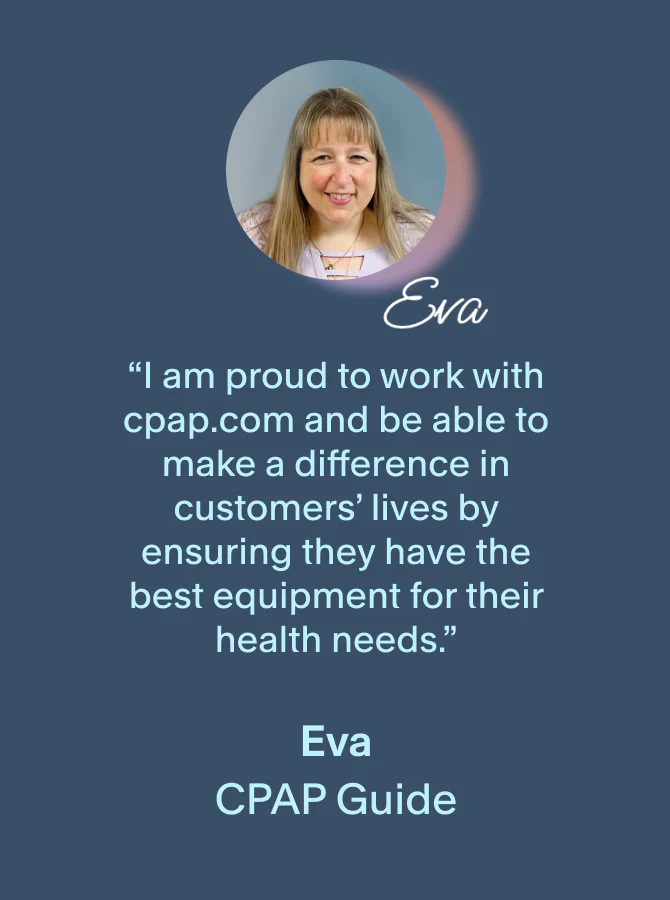Our content undergoes rigorous expert review, evidence-based research, and regular updates for accuracy.
Everybody is unique, and every person with sleep apnea experiences it in a slightly different way. Because of this, sleep apnea therapy is not a one-size-fits-all treatment. Sleep apnea machines come equipped with settings that sleep specialists can change to fit each person’s unique needs and sleep apnea therapy experience. A CPAP wearer can go years without really understanding much about their machine’s pressure and settings—and that’s understandable as long as it keeps working for them. However, if anything ever happens with your therapy or something changes with your health, understanding your CPAP pressure settings could help you and your doctor identify and solve any issues you may be having with your equipment. How much do you know about your machine’s pressure settings, regarding how they impact your sleep apnea treatment? What’s the average CPAP pressure setting? What pressure setting should you be using? What should you do if you snore while using your CPAP machine? Let's dive in!
Information About Your Pressure Settings

In general, your CPAP pressure setting should be just high enough to keep your airway open. When your pressure is too low, you may suffer from the symptoms of sleep apnea. If your pressure is too high, you may struggle to keep up with your therapy, have nasal congestion, and experience choppy or fragmented sleep. Your CPAP machine measures several things, including one key metric that sleep professionals use to determine the severity of your Obstructive Sleep Apnea (OSA). This is called the apnea-hypopnea index (AHI), and it indicates how many times you stop breathing over the course of an hour of sleep. Your AHI number will help your doctor or sleep specialist determine the right pressure for you. In terms of AHI, the goal of CPAP therapy is to help you keep your AHI readings to five or less. To get there, a sleep study will help you monitor your number of AHI’s and determine if your OSA is mild (5 to 15 AHI), moderate (15 to 30 AHI), or severe (30 or more AHI). The pressure of a CPAP machine is measured in centimeters of water (cmH2O)—a special unit of measurement that measures water pressure. This unit measures how much pressure a column of water exerts against its container. CPAP machines can be adjusted between 4 and 20 cmH2O. APAP machines also operate in that range, but since they are automatic, they are not set to a fixed number as a CPAP machine would be. Rather, they are capable of adjusting themselves within that range. BiPAP machines are slightly different as they can be adjusted to lower than 4 and higher than 20. The average CPAP pressure is 10 cmH2O, and most people with sleep apnea require a CPAP pressure between 6 and 14 cmH2O. APAP and BiPAP machines have some differences in terms of pressure settings when compared to a CPAP machine. Let's explore the ins and outs of pressure settings with APAP and BiPAP machines.
APAP and Pressure Settings
Automatic positive airway pressure (APAP) machines automatically adjust themselves to your changing breathing patterns throughout the night. If you are like many people with sleep apnea, you tend to have more frequent bouts of paused breathing at some times of the night over other times. APAP automatically adjusts your air pressure settings to fit your changing breathing patterns. Since it adjusts automatically, there is no average pressure—the machine uses sophisticated algorithms to ramp the pressure up or down based on the inhalations and exhalations of the wearer. While 4 to 20 doesn’t sound like a big range of numbers, when it comes to determining your pressure, 16 is a significant distance from 10. Your APAP machine is capable of adjusting itself within that 4 to 20 cmH2O range, so if your sleep apnea symptoms resurface while using an APAP machine odds are the culprit here is either a leaky mask, a change in your health, or something is wrong with the machine itself. Regardless of the potential source of the problem, if you begin experiencing your sleep apnea symptoms again while using an APAP machine, you should consult your specialist to narrow down possible causes.
BiPAP and Pressure Settings
A Bilevel Positive Airway Pressure (BiPAP) machine delivers two different air pressures to keep your airway open as you sleep. The machine senses when you inhale and exhale and produces different pressures accordingly. The BiPAP machine produces a high enough pressure to hold your airway open when you inhale and then produces a lower pressure when you exhale, making breathing easier. Additionally, some people find it difficult to exhale over the constant pressure of the CPAP machine, which in turn, also complicates inhalation, making a BiPAP machine the best option for them. BiPAP machines are also adjustable to as low as 3 and above 20 cmH2O, unlike CPAP and APAP machines that are normally calibrated between 4 and 20 cmH2O. In most cases, if you use a BiPAP machine, there are also other special circumstances associated with why you are using BiPAP instead of CPAP or APAP. Your first line of defense to fixing the issue if you are experiencing sleep apnea symptoms again will be to examine your mask for any leaks or begin utilizing a humidifier.
Is It Time for an Adjustment?
Your CPAP, APAP, or BiPAP pressure needs may change over time. But, how would you know? You may notice the return of snoring, gasping, or choking for air in the middle of the night or that you're experiencing daytime sleepiness again. These could all be signs that you are due for a pressure adjustment—or you may find that the answer is as simple as the fact that your mask is leaky. Before discussing a pressure adjustment with your doctor, you should try one of these things at home first:
- Leaky Masks. There are a number of factors as to why your CPAP mask is leaking. These can include your mask being old, not being cleaned enough, your sleeping position, or the fit. High pressure can also cause your mask to leak, especially if it’s not sealed to your face properly.
- Painful Gas or Bloating. Painful gas and bloating is a side effect of a CPAP machine, known as aerophagia. Aerophagia is a condition in which you swallow air during a night of therapy, causing uncomfortable bloating and gas when you wake up in the morning. You can fix it by first trying a different style of mask, but if that’s still a problem, a pressure adjustment or BiPAP machine may be what you need.
Snoring should not occur if your pressure is adequate, and your mask fit is correct. Remember that only trained professionals should adjust your machine's pressure—regardless if it’s a CPAP, APAP, or BiPAP. While we hope to relieve some pressure (no pun intended) for you in understanding your PAP pressure settings, remember to contact your sleep specialist first if you have any questions about your pressure settings.











